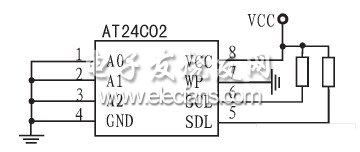At present, the number of elevators in our country increases rapidly with the increase of high-rise buildings, which provides great convenience for production and life. And how to ensure that each elevator can operate reliably, find faults and eliminate faults in a timely manner has become the key to improving the level of property management and the progress of elevator technology. The quality of elevator operation is directly determined by the function of the monitoring system. At present, the centralized monitoring system of domestic elevators mostly uses fixed transmission or CAN bus field data collection, and the maximum transmission distance of the CAN bus is 10 km. It is necessary to realize centralized monitoring of the elevator in a larger range , You need to increase the system hardware equipment. Therefore, this paper designs a remote elevator monitoring system based on GPRS technology. Because the wireless GPRS network has outstanding characteristics such as always-on and high transmission rate, in addition, it can reduce the system operation and maintenance costs to the minimum under the premise of ensuring timely and accurate data transmission.
1 Introduction to GPRS
GPRS is the abbreviation of General Packet Radio Service, which is a wireless packet switching technology based on GSM system, providing end-to-end, wide area wireless IP connection. GPRS introduces two new network nodes (GPRS service support node SGSN and GPRS gateway support node GGSN) in the GSM system and upgrades the software. It can establish a data communication link between the terminal equipment and the server connected to the Internet road. The technical advantages of the GPRS network are mainly reflected in two aspects, the combination of user data and wireless network resources and the transparent transmission of data based on the IP protocol. Compared with the original GSM, GPRS has obvious advantages in carrying and supporting data services: 1) Through multiplexing of multiple GSM time slots, the supported data transmission rate is higher, and the theoretical peak value is 17 Kbps; 2) Different network users share the same set of GPRS channels, but only when a certain user needs to send or receive data will channel resources be occupied. In this way, the channel resources are more effectively used by multiple users' service multiplexing, which is particularly suitable for bursty and frequent small-flow data transmission, and is well adapted to the bursty characteristics of data services; 3) The GPRS charging method is more Flexible and support billing by flow rate; 4) Unlike wireless application protocol (WAP) technology, GPRS can provide users with transparent IP channels at any time and can directly access all sites and resources in the Internet; 5) adopt channel multiplexing technology, Every GPRS user can achieve always online; in addition, GPRS can also support voice calls while performing data transmission.
2 System composition and principle
2.1 Principle of system composition
The composition structure of the elevator monitoring system based on GPRS is shown in Figure 1. The system consists of local PLC, information acquisition terminal, GPRS data transmission and remote monitoring center.

Figure 1 Structure of elevator monitoring system
First, the embedded microcontroller of the terminal device communicates with the local PLC to obtain the operating status parameters of the elevator, process the obtained data, and then send the processing results to the GPRS network through the GPRS module in the format of protocol data frames through the serial port in. Since the GPRS network and the Internet are based on the IP protocol and are connected to each other, the data processing results of the terminal are transparently transmitted to the remote monitoring center via the GPRS network. The monitoring center host accesses the Internet and has a fixed IP address. The terminal first logs in to GPRS to obtain an IP address, and then sends this IP address to the host monitoring center. Since the IP address of the terminal is the IP address of the GPRS intranet, it is necessary to perform network address translation through the NAT server of the GPRS network in order to realize two-way communication between the host and the terminal. When the host monitoring center receives the IP address sent from the terminal, the network between the terminal and the monitoring center is connected, and the query or control commands of the monitoring center can also be sent to the GPRS module through the Internet and GPRS network. The GPRS module is transmitted to the terminal equipment, and they are operated to realize the remote monitoring of the elevator on the embedded platform.
2.2 System terminal hardware design
MCU selects LPC21480 of NXP company. LPC2148 is based on a 32 / 16-bit ARM7 TDMI-S core microcontroller that supports real-time simulation and embedded tracking. It has the characteristics of high performance and low power consumption. It has rich peripheral resources and can achieve a maximum of 60. MHz CPU operating frequency.
The GPRS module uses Huawei's EM310. EM310 is a GSM / GPRS dual-band wireless module that supports EGSM900 and GSM1800 dual-band; provides data, voice, SMS, and fax functions; standard protocol authentication, compatible with GSMphase 2/2 + protocol standard: provides voice interface (low power consumption) , Support FIR, EFR, HR and AMR voice coding; support hands-free calling, provide echo suppression function; support standard and extended AT commands. In addition, the EM310 module also has a built-in TCP / IP protocol stack, which is controlled by AT commands and allows applications to easily access the network. The advantage of this solution is that it does not require application vendors to implement their own TCP / IP and PPP stack, which minimizes the cost and time required to integrate the network connection into a new or existing application. The EM310 interface circuit is shown in Figure 2. To make the EM310 work stably, the power supply voltage needs to be between 3.4 and 4.7 V, and the ripple of the power supply should be small; the time that the module start signal remains low at the IGT pin must be greater than 50 ms.

Figure 2 EM310 interface circuit
The data storage chip adopts CATALYS company's serial CMOSE2PROM——AT24C02. Advanced CMOS technology substantially reduces the power consumption of the device. The device contains 256 8-bit bytes of storage space and a 16-byte page write buffer. AT24C02 supports IC, bus data transfer protocol IC, bus protocol stipulates that any device that transmits data to the bus serves as a transmitter, and any device that receives data from the bus is a receiver. Data transfer is controlled by the master device that generates the serial clock and all start and stop signals. Both the master device and the slave device can be used as transmitters or receivers, but the master device controls the mode of transmitting data (transmitting or receiving). The AT24C02 interface circuit is shown in Figure 3.

Figure 3 AT24C02 interface circuit
3 Software design and implementation
3.1 AT command
The AT instruction set is sent from the terminal equipment (Terminal Equipmen, TE) or data terminal equipment (Data Terminal Equipment, DTE) to the terminal adapter (Terminal Adapter, TA) or data circuit terminal equipment (Data Circuit Terminal Equipment, DCE). Through TA and TE, AT commands are sent to control the functions of mobile stations (Mobile StaTIon, MS) and interact with GSM network services. Users can use AT commands to control calls, text messages, phone books, data services, and faxes.
AT command is an interface standard, and the command format is relatively fixed. The command is prefixed with AT or at and ends with a carriage return. Instructions are not case sensitive, but their parameters are case sensitive. AT commands include 4 types, see Table 1.
Table 1 AT command types

The 8-inch tablet will have a big impact on the 7-inch and 10-inch tablet market. Because the portability of an 8-inch tablet is stronger than that of a 10-inch tablet, and the usable area is larger than that of a 7-inch tablet. The most important thing is that the price is more moderate, which is much cheaper than a 10-inch tablet. It can be said that the 8-inch tablet computer has a good balance between portability and screen display area, and is more likely to be favored by the majority of users.
8 Inches Tablet Pc,Tablet Computer,8 Inch Android Tablets,8 Inch Tablet
Jingjiang Gisen Technology Co.,Ltd , https://www.jsgisengroup.com
